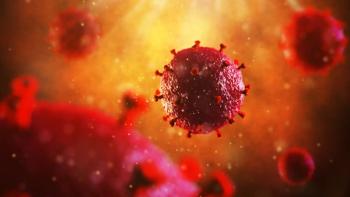
Statin Use Affects Cancer Risk in HIV-Infected Patients
A retrospective chart review among HIV-infected patients treated with ART found use of statin medications associated with a lower risk of cancer.
HIV infection is a well-known risk factor for cancer even after the introduction of highly active antiretroviral therapy (HAART) therapy.1 Several mechanisms are involved in the pathogenesis of cancer in HIV-infected patients. HMG–CoA reductase inhibitors (statins) are prescribed for their low-density lipoprotein cholesterol–lowering effects. A growing body of clinical evidence suggests that this reduction in available cholesterol may protect against the cellular proliferation essential for neoplastic growth and metastasis.2 Studies have shown a beneficial effect on cancer incidence and mortality in patients taking statins in the general population.2 A new study published in the journal AIDS examines the effect of statin therapy on occurrence of all AIDS-defining malignancies (ADM) and non–AIDS-defining malignancies (NADM) among HIV-positive patients.3
The investigators conducted a retrospective chart review of HIV-infected patients attending the Infectious Diseases Department of the San Raffaele Scientific Institute in Italy. The study included incident malignancies diagnosed after starting ART in patients not taking statins, whereas in patients taking statins, the medications must have been started before the cancer diagnosis.3 Follow-up was was calculated from the time of ART initiation until first cancer diagnosis or loss to follow-up or death, or last available visit, whichever occurred first.
The study examined 52,663 person-years, during which 740 patients (1.4%) had a history of statin use; 375 malignancies occurred: 12 malignancies (1.6%) (0 ADM; 12 NADM; crude incidence rate, 1.3/1000 person-years) among statin users and 363 malignancies (7.9%) (194 ADM, 169 NADM, crude incidence rate, 8.4/1000 person-years) among non–statin users. After applying multivariate Fine-Gray regression, statin use was associated with a lower risk of cancer (adjusted hazard ratio = 0.45; 95% confidence interval, 0.17–0.71).3
This study highlights the association of statin use in HIV-1 treated patients with a lower risk of cancer, mainly in the incidence of ADM. Primary care physicians should be aware of this association and of the guidelines for statin treatment for hypercholesterolemia in HIV-infected patients.
References:
- Spano J, Costagliola D, Katlama C, et al. AIDS-related malignancies: state of the art and therapeutic challenges. J Clin Oncol. 2008; 26:4834–4842.
- Nielsen SF, Nordestgaard BG, Bojeseb SE. Statin use and reduced cancer-related mortality. N Engl J Med. 2012; 367:1792–1802.
- Galli L1, Spagnuolo V, Poli A, et al. Use of statins and risk of AIDS-defining and non-AIDS-defining malignancies among HIV-1 infected patients on antiretroviral therapy. AIDS. 2014;28:2407-2415. doi: 10.1097/QAD.0000000000000443.
Newsletter
Enhance your clinical practice with the Patient Care newsletter, offering the latest evidence-based guidelines, diagnostic insights, and treatment strategies for primary care physicians.



















































































































































































































































































